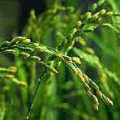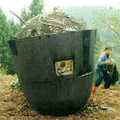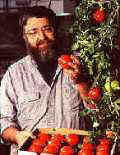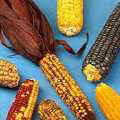�@�� �ǩ_��ۡE���Q�w�� �դh
<<�s���ݵ�>>
�ݧE��N��Ѥs�A���Ӥ����ߦ۶~�A
���y�����M�h�A�O���Ѧa�D�H���C
-- ���� (�����¸֤H)
�@�@�A�~�W�A�ϥΰ�]��y���ؤl�A�b�a�y���ͺA�t�ΤW���v�T�L�k�w���A�ӥB�i��ɭP�a���o�͡A�ͺA�Ǯa�惡�w�g���ߦh�ɡC�S���H�u�����D�A�V�X�o�Ǭ��ܺةM���ͺءA�|��ڭ����Ҧ���������v�Q�A�i��O�N�Q���쪺�s�Ӫ��A�P�ɥi��|���ͺؤl��γy���ˮ`�A�ӤH���M�ʪ��Y�o�ǧ@���������v�Q�A�h�O�����C
�@�@�W�P�����ݰw�b�v���ɡA�b��ͪ��ԶE�Ǥ��A�ڬB�_�@���u���餤��v���x�A�Ĥ@���{�Ѩ줤�ꪺ�Ӫźؤl�p���C�ڨä����D�A�b�L�h10�~�A����w�g��ؤl�e�W�F�Z�a��400���������Ť��A���䱵���Ӧۥ~�ӪŪ������g�C�����u�Ӫšv�w�q���Z�a��80�����H�W�����šC

�a�y���_���Ӫ��C
�@�@�Q�ή�y�M�H�y�ìP���覡�A�w�g�B�z�F�n�X�������ؤl�A�æ^��a�y�شӡC
�@�@�s�ت����ɡA�o�dzQ��g�ӹL������ؤl�A�شӦb7�U�������g�a�W�C�䥦��Ʀ��p�A�شӤӪźؤl���g�a�A�i��W�L42�U�����C�h�~�A�t�~��24�U3�d�������g�a�شӤF�ӪŽ_�C
�@�@���a�Q����ڭ�l���`�p���ɡA�b1997�~�A��140�U���������ܽ_�Q�شӡC

����ϥΥi�^���Ӫſ��A�p�ϩҥܡA�Ӱe�ؤl�i�Ӫťh������g�u�Ӯg�C�]�Ӥ��GCCP���ѡ^
�@�@�p���B�_�̡B�J�ԡB��ʡB���X�B�ڽ��B�C�ԡB�ɦ̡B�j�����A�W�L30�ؤ��P���Ӫ��M�V�X���A�M�T�ʺإH�W�䥦�`�����\���A�w�g�Q���굹�e�W�F�Ӫű�����]���ܡD
�@�@�u���餤��v���x�b1999�~5����ɡA�s��A�~�j���n�١A�Q�e�i�L�ӪŪ��_�l�`���ؤl�h�Ͳ�20��30�Ӧʤ���C�j�Ǭ�s�����n�ٷs���~�f�P���n�C�]���H���A���L�ӪŪ����K�ʺؤl�`�ؤl���X�Ӫ��ʡA�Ӫ��j�M���C
�@�@�b�_�ʪ��j���m�A�j�a�Ҫ����ӪŭJ�ԡA���i���X�A���i�H����350��500�J�A�B���L�R�ѧt�q���h�C������Z���ɡA�o�ǭJ�Ժؤl�����`�ؤl�����q�h�X�F�T�Q�Ӧʤ���C

����ͪ��u�{�f�X
�]�Ӥ��G����A�~�����ѡ^
�@�@�䤤�@�ظg�ӪŬ��ܪ��f�X�~�ءA����s�y���q�W�L800�J�����X�C
�@�@����Q�G�h���H�f�A�ݭn��h���Ӫźؤl�ӳB�z�����u�ʪ����D�C�@�ӶW�L1�U�������]�E�A�w�g�b�سy�����A�H�����u�}���ؤl��Ӫťh������g�C
�@�@�s�ت����ɡA�����ǰ|��ǾǬ�s�Ҫ��U�z��s�����g��]��Ķ�^���ܡA���ΤӪźؤl���A���~�A��H�����ӬO�w�����A�L�j�աA�P�@��b����Ǥ��B�a�i�䥦��������]�ӧ�y���@�����P�A�Ӫŧ@���O�a�ۤv��]�����ܡC
�@�@�ڤ�ı�o�o�ػ��k�O�H��ߡA�o�ǧ@����H���B�ʪ��B�άO��ͺA�t�Ϊ��v�T�A�ٯʥF������s�C
�@�@����]�b�@�Ӫźؤl������C1984�~�A�u�����n�γ]�ơv�Q�o�g�i�J�ӪšA��1990�~�^���C�b�������ȷ����A�f�X�ؤl�����Ӫſ�g��A�Q���e�ܦU�ӾǮեh����A�M��M�a�y�f�X����ӡC

����Ӫ��`�p���Ӫźؤl�ӪŲ�D�]�Ӥ��G�Ӫ��`�p���ѡ^
�@�@����]�شӤF�ƦʸU�^�a����]��y�@���A�Ӯ��O�̩M���Ҳ�´�A��ܦ��ا@�����X���A�w�g�n�X�~�F�C�ѳ\�h��ұo���A��]��y�@���|�ɭP�Y���ͺA���D�C(Misinterpreted, here "many examples" means the genetically modified crops not the mutated seeds from the space.)
�@�@�@��1997�~����s�AĬ��������Ǯa�o�{�A�ΦY��]��y���a�����H�ξi���]�ΡA�M�ΦY���`���a�����H�άۤ�A�����J���֡A�ةR�]��֤@�b�C
�@�@�t�@�Ӱ�]��y���o���Ӫ��]��a�ݡ^��e���v�T����s�o�{�A��]�u�{��o���Ӫ���e�M����ƾDzզ��_�F�L�����ܤơC�o�{�e���j�M³�����Ҧ����ҧ��ܡA�ӥB���`�v�j�q���W�[�C�o���O�ΨӺ^�o���ؤl�C
�@�@��~�}�l�_�B���q�s�ʪ��i�ީM�H���ƻs����_�ӡA���������Ӫźؤl�]�\�����Y���C�����a�A�H�������v�R���ۦ]���J�ϥά�ޥh�W�V�۵M�A�����d�G�����ҡCDDT�M�䥦���r���ξ����ϥΡA�ܤ��餴�b�R�����ؼ��Q�h�ڼw�i��O�ΨӴ�`�߯g�����A�o�y���L���ΡA�O��Ӭ�o�i���~���Ҥl�C

��]���ܪ��ɦ�
�]�Ӥ��G����A�~�����ѡ^
�@�@���H�p�ƪ��Ҥl�A����Q�{���w���A��ӵo�{��H���M���N�O�P�R���C�X�G�C�ѳ����F�����Ψ䥦���c�A�|�o�G�s�����i���A�L�h�Y�Ǫ���B�����B�ƾǫ~�Ψ䥦���~���ϥΤӦ��A�蘆�馨�H�M�p�ijy���ˮ`�A��M���`�C
�@�@��������s�A�P�������աB�M���w���M���`�ѡA�b�ڭ̥u������ֳt���G���g���@���ءA�ݨӤw�Q��ѡC
�@�@�j�������~���ߥؤ��A���|�j�����L�O�L�̪������H�A���Ǥ߶æp�ª����`�H���ݩҴ��X���H�k�P�������ƶD�^�A�C�~�u�n��X�ʸU���N�i�ѨM�C
�@�@�]�\�A�N�ӷ|�ҩ��Ӫźؤl�����ҩM�ڭ̪����d�O���q���C�������A�ڭ̥i��û��L�k���D�A�]�u���ּƤH��M��u�����צ��ҿ���C�A�ڤ]�\�û����|���D�A���O�ڭ̪���N�l�]�i��o�g���h�W�ӵo�{�ƹ�C
�@�@���Ӧ��h�֥N�l�]�A�N���ڭ̪����ӥI�X�N���H
�ѦҸ��
1. �h�ݬݨ��g�n�b�u���餤��v���峹�C
2.���������A�ФW�u�ӪŤ���v�������\Ū�Ghttp://www.spacedaily.com/news/china00zb.
html
3.�Ѭݰ��|�Ӫźؤl�]�E���Ӹ`�Chttp://www.spacedaily.com/news/china-00e.html
4.�������ꪺ�Ӫŭp�e����h�T���Chttp://www.dailyrevolution.com/
tuesday/chinaspace.html
5.�ѦҤ���F�����u�H������v�����A�A�ѤӪźؤl�������o�i�C
6.�A�Ѱ�ڭ�l���`�p��ƪ��[�I�Chttp://www.iaea.org/worldatom/
Press/Booklets/UndpBook/more_rice.html
7.�\Ū�@�g�ԲӤ��а�]��y�������峹http://www.home.intekom.com/
tm_info/rw90104.htm
8.��]���ӧ@�����ͺA�����A���������ԲӬ����Chttp://www.pmac.net/
miguel.htm
9.�~�����������~�B�ʡChttp://www.purefood.org/index.htm
10.��X�֬O�A����|�N���A�åBemail���L�̡C�n�D�L�̧V�O����]��y�ΤӪŬ��ܪ������A�����ڭ̡C�ھڧA���l���ϸ��A�i�b�o�������L�̡Ghttp://www.visi.com/juan/congress/
ziptoit.html �A�Ϊ̧A�i���U�{�j�M�Ghttp://www.webslingerz.com/jhoffman/
congress-email.html�A�A�]�i�b�����A���N���Ghttp://congress.nw.dc.us/
innovate/index.html
�ǩ_�E��ۡE���Q�w�ճդh�A�O�趮�Ϫ��Юv�ݧ@�a�C�L����l�Y�N�b5��X�͡A�L���b�Q�A�ﱵ�L��l���B�N�O�Ӥ���˪��@�ɡC�бN�A���Q�k�B���P�[��H��H�U���H�c���L�Gjackie@healingourworld.com�A�άO�y�X�L�������p�U�Ghttp://www.healingourworld.com
�����}�Ghttp://www.ens.lycos.com/
ens/jan2001/2001L-01-26g.html
���v�k��Environment News Service(ENS)�A���ҫH�U����|(�L�� Ķ�AĬ�]ٱ�B���R�D �f��)
���^��ӥ���Ghttp://news.ngo.org.tw/issue/biotech/2001/issue-biotech01042501.htm
�@ |
|
By Jackie Alan Giuliano, Ph.D
You ask me why I dwell in the green mountain. I smile and make no reply for my heart is free to care. As the peach blossom flows down the stream and is gone into the unknown, I have a world apart that is among no one.-- Li Po (Chinese poet of the T'ang Dynasty)
Concern has been expressed by ecologists for some time that using genetically altered seeds in agriculture could yield unpredictable - and possibly catastrophic - results in the ecosystems of the Earth. No one really knows what the long term effect on our environment will be of mixing these mutated seeds with wild strains. New, unexpected plants could result and damage could be done to the original seed stock. The long term effects on humans and animals of eating these crops is unknown.
While waiting for an acupuncture treatment last week, I picked up a copy of "China Today" magazine in my doctor's waiting room and learned for the first time about China's space seed program. I had no idea that for the last decade China has been sending seeds to altitudes as high as 400 kilometers (250 miles) above the Earth's surface to be bathed in high energy radiation from outer space. The United States defines space as anything above about 80 kilometers (50 miles).
The rice plant of Earth (Photo courtesy U.S. Department of Agriculture)
Using balloons and satellites, tons of seeds have been treated in this way, returned to Earth, and planted.
China's state run Xinhua News Agency has reported that 70,000 hectares (175,000 acres) have been planted with these radiated vegetable seeds. Other sources estimate that the number of hectares planted with space seeds may exceed 420,000 hectares (1,037,805 acres). An additional 243,000 hectares of space rice fields were to be planted last year.
The International Atomic Energy Agency in Austria reports that 1.4 million hectares (over 3.4 million acres) of mutated rice was planted in China as of 1997.
China is using recoverable space capsules such as the one shown here to send seeds into space for irradiation. (Photo courtesy
CCP)
Wheat, rice, peppers, watermelon, tomato, Chinese radish, green pepper, corn, barley, wheat, over 30 varieties of herbal plants and compounds and over 300 other common crops have been sent into space by China to be genetically mutated.
"China Today" magazine reported in May 1999 that the Guangxi Agriculture University in southern China claims that rice seeds sent to space have yields 20 to 30 percent greater than normal seed. University researchers also claim that the new products taste better. There are claims that hami melon seeds flown in space were larger and sweeter than normal seeds raised on Earth.
In Daxing county near Beijing, space peppers, as they are now commonly known, are reported to grow as large as 350 to 500 grams (nearly 18 ounces) with an increased vitamin C content. The Chinese press reports that these pepper seeds yield 30 percent more vegetables than normal seed.
Bioengineered tomatoes in the United States (Photo courtesy U.S. Dept. of Agriculture)
One of the space tomato varieties produces tomatoes that weigh over 800 grams - over 28 ounces!
Plans call for increased use of space seeds in an attempt to cope with food shortages for the over 1.2 billion people in China. A nursery covering over 10,000 hectares (24,709 acres) is already under construction to supply high quality seeds for space exposure.
Xinhua reported that Li Jinguo, an associate research fellow with the Institute of Genetics at the Chinese Academy of Sciences, said produce grown from space seeds would be safe for human consumption. He stressed that unlike crops genetically modified in laboratories by introducing genes from other species, space crops undergo a mutation of their own genes.
I do not find this reassurance at all comforting, since there are no long term studies that show either the effect that consuming these crops have on humans, animals, or the impacts they may have on the ecosystem.
The United States has also experimented with space seeds. The Long Duration Exposure Facility was launched into space in 1984 and retrieved in 1990. Tomato seeds were exposed to space radiation during this mission. They were distributed to schools to experiments with and to see how they compared to Earth tomatoes.
NASA's own space seed spacecraft. (Photo courtesy National Aeronautics and Space Administration (NASA))
The United States has also planted millions of acres of genetically modified crops, and consumer and environmental organizations have been fighting to prevent the proliferation of this practice for years. Many examples exist that suggest serious ecological problems could result from their use.
In a 1997 study, scientists in Scotland discovered that ladybugs feeding on aphids that ate genetically modified potatoes laid fewer eggs and lived only half as long as ladybugs who ate aphids that fed on normal potatoes.
In another study of the effect of genetically engineered rapeseed plants (Brassica napus) on bees, it was found that genetic engineering also subtly changes the chemical composition of the plants' nectar and pollen. The foraging pattern of the bees was observed to change and their mortality rate increased significantly. Rape seeds are pressed to produce canola oil.
With the breeding of custom designed animals and human clones just on the horizon, growing space seeds may seem like a minor concern. Unfortunately, human history is filled with examples of how the zeal to use technology to outpace nature has resulted in dire consequences. The use of DDT and other toxic pesticides that continue to destroy species to this day and the use of thalidomide to ease morning sickness that created a generation of deformed children, are but two examples of technological progress gone wrong.
Genetically mutated corn (Photo courtesy U.S. Dept. of Agriculture)
Countless substances, once thought of as safe, have been found to be deadly to humans and their unborn children. Nearly every day, one government agency or another will issue a new report on substances, foods, chemicals or products that were released too soon and have caused injuries, deformities, and deaths in adults and children.
Long term studies, sound testing programs, and common sense precautions seem to be forgotten tools in our greed driven world that is not satisfied with anything less than instant results.
Most industries consider the public their test subjects, costing only a few million dollars each year in wrongful death lawsuits brought by distraught relatives of unwilling victims.
Maybe space seeds will turn out to be benign to the environment and our health. Unfortunately, we may never know since few are interested in really finding out. You and I may never know, but our children and grandchildren may find out - the hard way.
How many future generations will have to pay the price of our haste?
RESOURCES
1. Check out the article I found in "China Today" about space seeds.
2. Read more about this issue in "Space Daily" at: http://www.spacedaily.com/news/
china-00zb.html
3. See the details of the nursery being build to supply space seeds at:
http://www.spacedaily.com/
news/china-00e.html
4. More about China's space program can be found at: http://www.dailyrevolution.com/
tuesday/chinaspace.html
5. Read about space seeds at the website, "People's Daily" run by the Chinese government.
6. Read about the issue from the viewpoint of the International Atomic Energy Agency at:
http://www.iaea.org/worldatom/Press/
Booklets/UndpBook/more_rice.html
7. Read a detailed article about genetically engineered foods at: http://www.home.intekom.com/
tm_info/rw90104.htm
8. The ecological impacts of transgenic crops are detailed at: http://www.pmac.net/miguel.htm
9. Stay involved with the organic food movement at: http://www.purefood.org/index.htm
10. Find out who your Congressional representatives are and e-mail them. Demand that they keep genetically modified or space mutated food away from us. If you know your Zip code, you can find them at:
http://www.visi.com/
juan/congress/ziptoit.html or you can search by state at: http://www.webslingerz.com/jhoffman/
congress-email.html. You can also find your representatives at: http://congress.nw.dc.us/innovate/
index.html
[Jackie Alan Giuliano, Ph.D. is a writer and teacher in Seattle. He can be found thinking about his son who will be born this May and what kind of world will greet him. Send your thoughts and ideas to him at
jackie@healingourworld.com and visit his web site at:
http://www.healingourworld.com]
http://www.ens.lycos.com/ens/
jan2001/2001L-01-26g.html
�@ |
